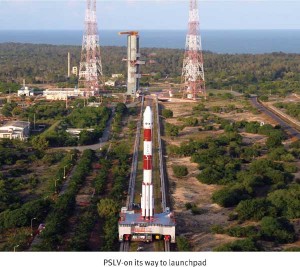 The Indian Space Research Organisation is planning its first ever mission to the Red Planet. The Mars Orbiter mission will enable it understand the technological challenges of such an exploration. While searching for signs of life on it, the mission will aim to determine why the Red Planet lacks an atmosphere like the Earth.
The Indian Space Research Organisation is planning its first ever mission to the Red Planet. The Mars Orbiter mission will enable it understand the technological challenges of such an exploration. While searching for signs of life on it, the mission will aim to determine why the Red Planet lacks an atmosphere like the Earth.
ISRO plans to use the Polar Satellite Launch Vehicle (PSLV) to launch the Rs. 450-crore Mars Orbiter. The PSLV carrying the Mars Orbiter, will blast off from the Satish Dhawan Space Centre at Sriharikota within the launch window of October 21 to November 19, a period during which Mars will be closest to the Earth.
The Orbiter is expected to exit the Earth’s orbit in the last week of November and travel for at least ten months before reaching Mars in September 2014.
The Mars Orbiter will be carrying compact science experiments with a total mass of about 14.49 kg. It will carry a methane sensor to determine the presence of methane that would suggest whether life ever existed on Martian soil. The five payloads of the Orbiter mission include a Lyman Alpha Photometer for studying the escape processes of Mars upper atmosphere through deuterium/hydrogen, Methane Sensor for Mars to detect the presence of methane while Martian Exospheric Composition Explorer would study the neutral composition of the Martian upper atmosphere. MARS Colour Camera would undertake optical imaging and TIR Imaging Spectrometer, which is targeted at mapping surface composition and mineralogy.
The satellite will enter a 372 km by 80,000 km elliptical orbit around Mars. The spacecraft will orbit the Red Planet once in every three days studying its surface and minerals.
The PSLV-XL (PSLV-C25) will inject the spacecraft from the spaceport of Sriharikota in the 250 X 23,000 km orbit. After leaving the Earth orbit in November, the spacecraft will cruise in deep space for ten months using its own propulsion system and reach the Martian transfer trajectory in September 2014.




